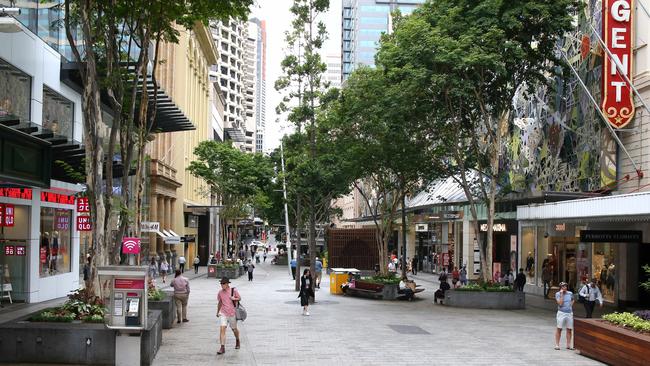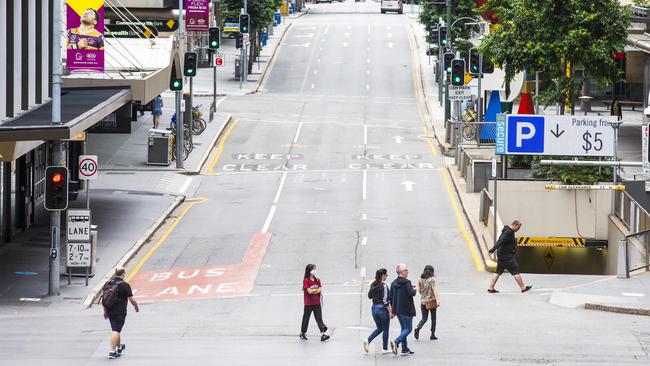Brisbane Job Market won’t be normal until 2022, according to Council data
Brisbane City Council modelling has revealed how long the city’s job market will continue to suffer after JobKeeper payments end.

QLD Coronavirus News
Don't miss out on the headlines from QLD Coronavirus News. Followed categories will be added to My News.
Brisbane’s job market will not return to pre-COVID levels for a year after JobKeeper payments are scheduled to stop, according to Brisbane City Council’s latest economic predictions.
RBA rate cut: Best ways to save on your home loan
Beach 4WD restrictions ease as COVID-19 rules relaxed
Council data obtained by The Courier Mail shows the number of jobseekers in the Brisbane local government area has doubled since March, with sectors losing up to a third of their workforces.
Economic development figures predict those numbers will not return to pre-COVID levels until March 2022 – 12 months after JobKeeper payments are scheduled to stop, in March 2021.
Some 3300 businesses in the CBD alone are accessing JobKeeper – 1300 or those are outside the expected COVID-19 impacted sectors of hospitality, tourism and travel.
“That’s telling us is there are a lot of normal businesses that are being affected due to COVID,” Council Economic Development Manager Chris Isles said.
Despite increasing since the COVID lockdown, CBD Foot traffic remains “volatile” and is on average around 20 per cent below normal, Mr Isles said.

It comes as the Australian Property Council identified CBD activity as a key rubric for COVID-19 recovery.
“Survey results have also shown a huge spike in respondents identifying ‘vibrant city centres’ as a critical issue to be addressed by State Governments,” Property Council Queensland Executive Director, Chris Mountford previously said
While some fields – notably financial and insurance services and public administration and safety – are offering more jobs now than before the pandemic, the majority of the River City’s industries have shrunk in the wake of the virus.
Brisbane’s hospitality and accommodation workforce decreased by more than 30 per cent at the nadir of the pandemic – and remains 10 per cent smaller than pre-COVID.

The information media and telecommunications workforce also remains 11 per cent smaller than before the pandemic.
“The number of jobs in Brisbane LGA fell sharply in the June quarter 2020,” Mr Isles said.
Council economic development chair Krista Adams said the gradual increase in foot traffic – from 80 per cent below average in April, to 20 per cent below average in September – was a sign of green shoots.
“When shops shut, hospitality stood still, events were cancelled, dining and entertainment spending plummeted, and our youngest under-20 employees were hit the hardest by job losses,” she said.
“Brisbane has seen a gradual increase in people heading back to the workplace, growing from a 40 per cent reduction from pre-COVID levels in April to less than 20 per cent in October, providing a much-needed boost for hard-hit CBD businesses.”
Cr Adams said council’s dedicated Economic recovery taskforce would continue monitoring economic data to shape its post-pandemic efforts.
“We’re committed to finding ways to create local jobs and engage local suppliers with procurement opportunities for major projects like Brisbane Metro and green bridges,” she said.
